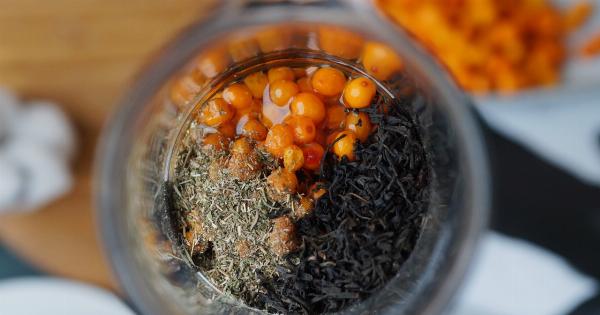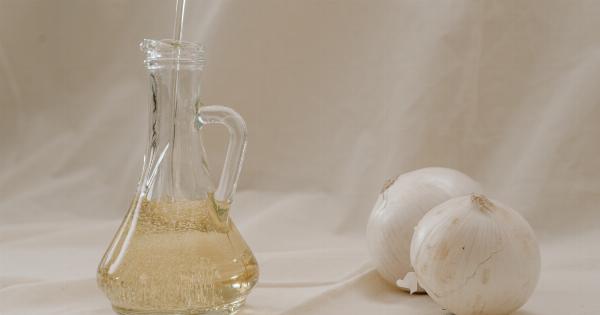When it comes to spreads for your bread or ingredients for your recipes, the butter versus margarine debate has been ongoing for years.
Both butter and margarine have their pros and cons, and choosing between them can be a matter of personal preference as well as health considerations. In this article, we will explore the differences between butter and margarine to help you make an informed decision on which one to include in your diet.
1. Nutritional Aspects
One of the key factors to consider when choosing between butter and margarine is their nutritional composition. Butter is made from milk or cream and contains high amounts of saturated fats, cholesterol, and vitamins A and D.
On the other hand, margarine is typically made from vegetable oils and undergoes hydrogenation to solidify it. This process creates trans fats, which are considered unhealthy.
However, it’s important to note that not all margarines contain trans fats. Some manufacturers have started producing trans fat-free or low-trans-fat margarines in response to health concerns.
These margarines are often labeled as “trans fat-free” or “zero trans fats.” They are a healthier alternative if you prefer margarine over butter.
2. Health Concerns
Due to its high saturated fat content, butter has long been associated with an increased risk of heart disease and high cholesterol levels. Saturated fats can raise LDL (bad) cholesterol levels, contributing to the formation of plaque in the arteries.
However, recent studies have suggested that the relationship between saturated fats and heart health may not be as straightforward as once believed.
On the other hand, trans fats are known to be harmful to health. Artificial trans fats, created during the hydrogenation process of making margarine, raise LDL cholesterol and lower HDL (good) cholesterol levels.
Trans fats have been linked to an increased risk of heart disease, stroke, and other serious health conditions.
To make a healthier choice, it’s recommended to limit your intake of both saturated fats and trans fats.
Opting for spreads or margarines made from healthier oils, such as olive oil or sunflower oil, can be a better alternative than those containing trans fats.
3. Cooking Potential
Butter has long been favored in cooking and baking due to its rich flavor and ability to enhance the taste of dishes. It adds a creamy texture and a distinct aroma to various recipes, making it a popular choice among chefs and home cooks alike.
Butter is particularly sought after for baking, as it lends a tender and flaky texture to pastries, cookies, and cakes.
On the other hand, margarine is often praised for its versatility in cooking. It has a higher smoke point than butter, allowing it to withstand higher temperatures without burning. This makes it suitable for sautéing, frying, and grilling.
Margarine also spreads easily, even when cold, making it a convenient choice for spreading on toast or mixing into ingredients.
However, it’s worth noting that not all margarines perform as well as butter in baking. The higher water content in margarine can sometimes create undesirable results in specific recipes, such as less crispy cookies or flatter cakes.
It’s important to consider the specific cooking techniques and recipes you plan to use when deciding between butter and margarine.
4. Taste and Texture
Taste and texture are significant factors when choosing between butter and margarine. Butter is lauded for its rich, creamy, and slightly salty flavor, which enhances the taste of both savory and sweet dishes.
Its solid texture, even at room temperature, gives it a spreadable consistency when softened slightly. Many people consider the taste of butter to be superior to that of margarine.
Margarine, on the other hand, often comes in different varieties, ranging from hard sticks to softer spreads. Its flavor and texture vary depending on the brand and type of margarine, making it suitable for different preferences.
Some margarines are designed to mimic the taste and texture of butter, while others offer a milder and lighter taste. Ultimately, the choice between butter and margarine in terms of taste and texture depends on individual preferences.
5. Dietary Restrictions
For individuals with dietary restrictions, such as lactose intolerance or dairy allergies, margarine can be a suitable alternative to butter.
Margarines made with plant-based oils and without any dairy ingredients offer a way to enjoy the benefits of a spread without the adverse reactions caused by dairy products.
However, it’s essential to carefully read the ingredient labels on margarine products, as some varieties may still contain small amounts of milk proteins or other allergens.
If you have dietary restrictions, it’s always best to opt for margarines specifically labeled as “dairy-free” or “vegan” to ensure they meet your dietary needs.
6. Environmental Considerations
Another aspect to consider when choosing between butter and margarine is their impact on the environment. Butter production requires animal farming, which contributes to greenhouse gas emissions and land use.
Margarine, on the other hand, is primarily made from vegetable oils, which can have a lower environmental footprint.
It’s important to note that not all margarine production processes are equal in terms of sustainability. Some margarines may use oils derived from crops linked to deforestation, such as palm oil.
It’s advisable to choose margarines made from sustainably sourced oils or look for certifications such as RSPO (Roundtable on Sustainable Palm Oil) to minimize environmental impact.
7. Moderation and Balance
Regardless of whether you choose butter or margarine, moderation is key. Both spreads should be consumed in moderation as part of a balanced diet.
Excessive intake of saturated fats, found in butter, can lead to health issues, including heart disease and weight gain. Similarly, consuming excessive amounts of margarine, particularly those containing trans fats, can also have negative health effects.
It’s recommended to opt for healthy fat sources, such as nuts, seeds, avocado, and olive oil, as part of a balanced diet.
These sources offer beneficial unsaturated fats that can contribute to overall health and well-being while still adding flavor and texture to your meals.
8. Making the Right Choice for You
Choosing between butter and margarine ultimately comes down to personal preference, dietary needs, and health considerations.
It’s important to understand the nutritional aspects, health concerns, cooking potential, taste and texture, dietary restrictions, environmental impact, and the importance of moderation when making your decision.
For those looking for a rich flavor and willing to consume saturated fats in moderation, butter may be the preferred choice.
On the other hand, individuals seeking a spread with fewer saturated fats or who follow a vegan or dairy-free lifestyle may opt for margarine made from healthier oils and free from trans fats.
9. Consulting a Healthcare Professional
If you have specific dietary concerns or health conditions, it’s advisable to consult with a healthcare professional or a registered dietitian before making a decision.
They can provide personalized advice based on your individual needs and help you make an informed choice that aligns with your health goals.
10. Conclusion
In conclusion, the decision between butter and margarine depends on various factors, including nutritional aspects, health concerns, cooking potential, taste and texture, dietary restrictions, environmental impact, and personal preference.
To make the right choice for you, it’s crucial to consider all these aspects and consult with a healthcare professional if necessary.
By choosing spreads wisely and consuming them in moderation, you can enjoy the benefits of a tasty and versatile option while also maintaining a balanced and healthy diet.



























